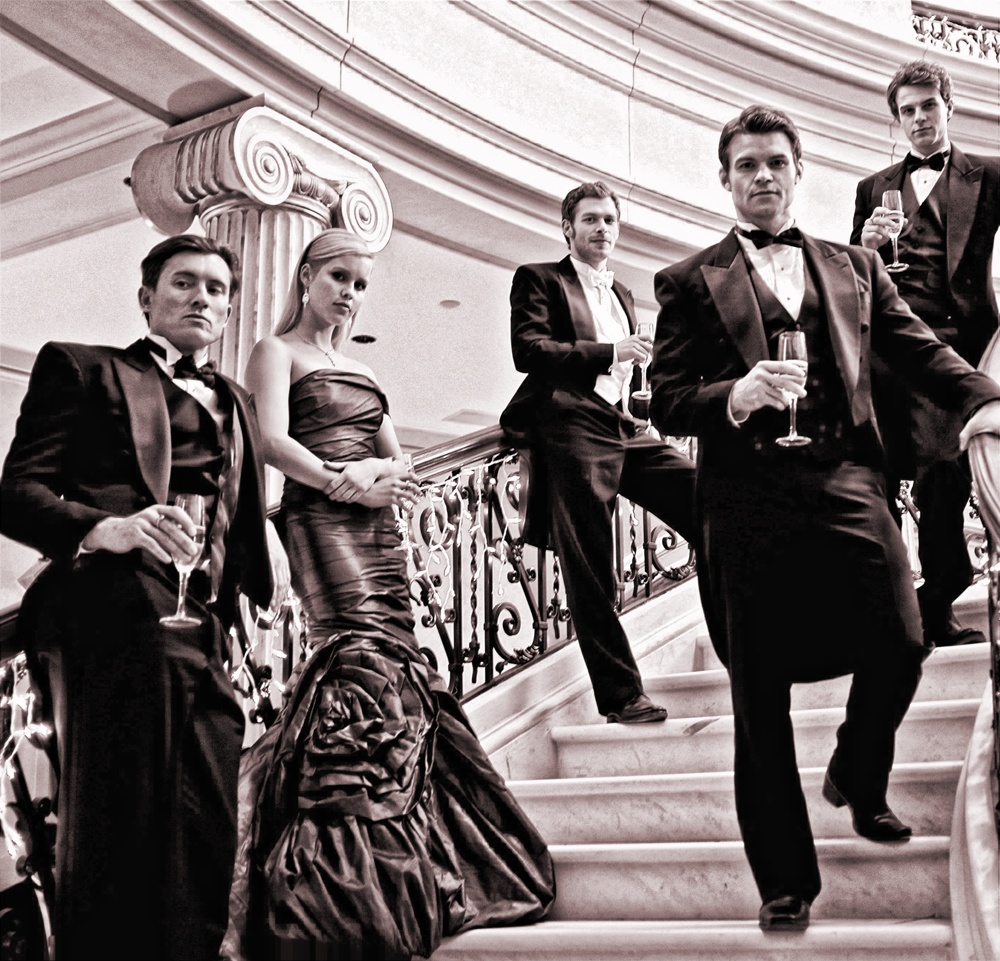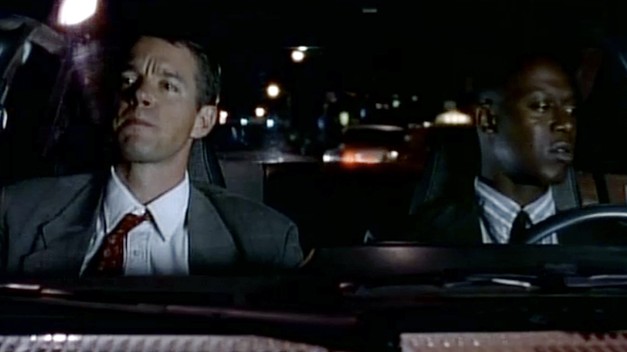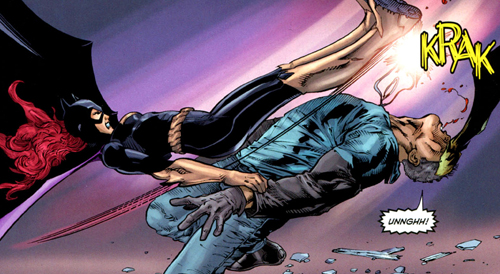 Sure, it would be easy to rattle off all sorts of movie titles that feature the name of colors. Go ahead and knock yourself out: The Pink Panther, Red Dawn, Yellow Submarine, Purple Rain, Blue Velvet, Goldfinger, etc. The listing seems rather endless. However, can one come up with color-contained movie titles that also carry some messaging of substance and contemplation? Maybe films such as Fried Green Tomatoes or Steel Magnolias are color-coated entries that carries some relevance in its messaging about feminine empowerment for instance. In Rainbow Coalition: Top 10 Movie Titles with Color and Substance let us look are the leading selections that have both color (in title) and substance (in thematic forethought) attached to its skin. Hey, maybe one can make a case for Pink Flamingos but The Blue Lagoon might be stretching things a bit…don’t you think? The Rainbow Coalition: Top 10 Movie Titles with Color and Substance are (in alphabetical order):
Sure, it would be easy to rattle off all sorts of movie titles that feature the name of colors. Go ahead and knock yourself out: The Pink Panther, Red Dawn, Yellow Submarine, Purple Rain, Blue Velvet, Goldfinger, etc. The listing seems rather endless. However, can one come up with color-contained movie titles that also carry some messaging of substance and contemplation? Maybe films such as Fried Green Tomatoes or Steel Magnolias are color-coated entries that carries some relevance in its messaging about feminine empowerment for instance. In Rainbow Coalition: Top 10 Movie Titles with Color and Substance let us look are the leading selections that have both color (in title) and substance (in thematic forethought) attached to its skin. Hey, maybe one can make a case for Pink Flamingos but The Blue Lagoon might be stretching things a bit…don’t you think? The Rainbow Coalition: Top 10 Movie Titles with Color and Substance are (in alphabetical order):  1.) Blue Caprice (2013) What a crying shame that writer-director Alexandre Moors’s seriously underrated crime caper Blue Caprice went largely unnoticed at the box office upon its release in 2013. With chilling and captivating performances by Isaiah Washington and Tequan Richmond as the symbolic father-son/mentor-apprentice tandem John and Lee that went on a random killing spree with their blue caprice vehicle as the mobile operation for their hideous killing spree tendencies. Blue Caprice was loosely based on the real-life 2002 Beltway sniper attacks that perplexed law enforcement officials, concerned citizens and media outlets alike. A disturbing drama detailing the dark detachment of an alienated man and his lost charge looking for a sense of purpose and belonging.
1.) Blue Caprice (2013) What a crying shame that writer-director Alexandre Moors’s seriously underrated crime caper Blue Caprice went largely unnoticed at the box office upon its release in 2013. With chilling and captivating performances by Isaiah Washington and Tequan Richmond as the symbolic father-son/mentor-apprentice tandem John and Lee that went on a random killing spree with their blue caprice vehicle as the mobile operation for their hideous killing spree tendencies. Blue Caprice was loosely based on the real-life 2002 Beltway sniper attacks that perplexed law enforcement officials, concerned citizens and media outlets alike. A disturbing drama detailing the dark detachment of an alienated man and his lost charge looking for a sense of purpose and belonging.

2.) Black Hawk Down (2001) Director Ridley Scott’s war drama told the tale of an elite squad of 100-plus American soldiers out to complete a complicated mission in Somalia. The task at hand: to apprehend two top lieutenants of a Somali warlord in the country’s capital city of Mogadishu. The 1993 arrival of the American troops to realize their duty on foreign soil were helped along by their means of arrival in Black Hawk helicopters. When two of the Black Hawk helicopters are disabled and their operators in peril the stakes become even higher as tricky rescue efforts are put into action. With the intensified gunplay between the Somali combatants and American forces the retrieval of the Black Hawk downed personnel becomes increasingly puzzling. War games are never fun without structured protocol, correct?

3.) A Clockwork Orange (1971) Writer-producer-director Stanley Kubrick’s A Clockwork Orange (by way of Anthony Burgess’s 1962 novel) is an edgy, sadistic-ridden and erratic surrealistic look at Britain’s dystopian future where the social-political commentary on the unhinged state of youth-oriented recklessness is on display for unflinching dissection. A Clockwork Orange’s antagonist Alex (Malcolm McDowell) is a classical music enthusiast whose side “pleasures” include raping and leading a gang of ruthless thugs (“droogs”) as they go around and terrorize the vulnerable society they feel is their perverse playground on which to carry out their wicked-minded whims. Soon, the sociopath Alex becomes a subject of intense experimentation to determine his psychiatric, mental and moral off-balance constitution. Alex’s combative rehabilitation into repairing his damaged psyche is met with more controversies on the macabre methods into reaching within this tortured young hood’s twisted soul.

4.) The Color Purple (1985) Alice Walker’s powerful and absorbing Pulitzer Prize-winning novel is given the big screen treatment in filmmaker Steven Spielberg’s poignant film about the trials and tribulations of a black young girl turned woman named Celie Johnson (Oscar-nominated Whoopi Goldberg) whose turbulent life is chronicled during the early 1900’s in the American South. Celie’s adversity is tested in her early life from being impregnated by her own father at age 14 to being separated from her baby and beloved sister to being married off to an abusive older man Albert (Danny Glover) and being tormented by his son Harpo (Willard E. Pugh). Celie, at first, is ridiculed by Albert’s attractive mistress Suge (Margaret Avery) with her nasty quip “You sho is UGLY!” until both women bond and find a way to liberate Celie away from Albert’s mean-spirited clutches. The Color Purple is not only an emotional showcase for African-American female empowerment and strength but for ALL women that find themselves disenfranchised their restricting predicaments.  5.) The Green Mile (1999) The emotional dilemma of Death Row prison guard Paul Edgecomb (Tom Hanks) is quite burdensome. You see he has taking a liking to jailbird John Coffey (the late Oscar-nominated Michael Clarke Duncan), a balding and massively muscular-build black man scheduled for execution to “walk the green mile” towards his Death Row demise. It is in the early 1930’s and Coffey was convicted of rape and the murder of a child so he is basically on borrowed time in the penal system. Yet there is something so likable and compelling about John Coffey that Edgecomb and the other guards cannot quite put their fingers on that makes the convicted Death Row inmate so intriguing. For starters, Coffey has a “mysterious and special gift” that makes snuffing out his life all the more troublesome for the prison authorities. The Green Mile’s whimsy and sadness both highlights this incarcerated supernatural fantasy. Based upon best-selling author Stephen King’s 1996 novel of the same name.
5.) The Green Mile (1999) The emotional dilemma of Death Row prison guard Paul Edgecomb (Tom Hanks) is quite burdensome. You see he has taking a liking to jailbird John Coffey (the late Oscar-nominated Michael Clarke Duncan), a balding and massively muscular-build black man scheduled for execution to “walk the green mile” towards his Death Row demise. It is in the early 1930’s and Coffey was convicted of rape and the murder of a child so he is basically on borrowed time in the penal system. Yet there is something so likable and compelling about John Coffey that Edgecomb and the other guards cannot quite put their fingers on that makes the convicted Death Row inmate so intriguing. For starters, Coffey has a “mysterious and special gift” that makes snuffing out his life all the more troublesome for the prison authorities. The Green Mile’s whimsy and sadness both highlights this incarcerated supernatural fantasy. Based upon best-selling author Stephen King’s 1996 novel of the same name.

6.) How Green Was My Valley (1941) Familial angst and the struggles of domestic life seemed to be the fitting and reflective themes of entertainment in 1940’s cinema. In director John Ford’s How Green Was My Valley we find the Morgans trying to eke out a hectic existence in the Welsh mining town in which this family resides. Patriarch Mr. Morgan (Donald Crisp) and his sons toil for endless hours in the darkness and danger of the coal mines where they are employed. Bottom line: the Morgan parents want a better life for their offspring. The youngest Morgan son Huw (Roddy McDowell) is the one that neither of the Morgan parents or brothers want for Huw to follow in their tedious footsteps when servicing the unpredictable coal mines and its unhealthy environments. Financial times are difficult in the struggling valley for the Morgans but can young Huw break the cycle of working manual labor for ungrateful superiors in the depths of earthy black hole uncertainty?

7.) On Golden Pond (1981)
Mark Rydell’s On Golden Pond was certainly a winning combination for real-life father/daughter duo Henry and Jane Fonda as their existing relationship felt solid and mended through their big screen fictional characterizations as Norman and Chelsea Thayer. There is always a good measure of resonance when estranged parents and their children finally come to terms with the static and strains that separated them in the first place. Fonda, in his very last on-screen role that finally earned him his best actor Oscar, portrays retired professor Norman Thayer whose retreat to the cottage on the golden pond with wife Ethel (Katherine Hepburn) takes a turn when his daughter Chelsea finally shows up after years of absence. Chelsea is about to get married and become a stepmother to her hubby-to-be’s son Billy Ray (Doug McKeon). The idea of a distant and cranky Norman being saddled with boy is unspeakable at first until both the old man and youngster eventually bond. Just how did Billy Ray get to through the hard core shell of Norman’s psychological armor? Better yet can Chelsea finally reach her hardened elderly father and make amends with him as she witnessed the miracle of her stepson’s efforts to soften him up?

8.) Red Badge of Courage (1951)
There have been countless war flicks about the bravery and patriotic heroics of the valiant men and women that fought for the noble causes of their countries. Sometimes the depiction of war was honorable and then on the flip side of the coin disingenuous. For the most part, war pictures in the golden age of cinema have relied on the upbeat sentiment of jingoism and the conviction of the fighting soldier. Again, this is not necessarily a bad thing. In writer-director John Huston’s Civil War saga Red Badge of Courage we get a rare instance where a union soldier Henry Fleming (Audie Murphy) is plagued by the notion of fighting gallantly within the bloody battlegrounds. The doubts, despair, disillusionment–all are examined in the definition of courageousness and consciousness as it conflicts Murphy’s reluctant gun-toting hero in Fleming. The motivation for wanting to fight the good cause is there but Fleming cannot quite get over the freeze of stepping into battle with the mindset for gun-powdered confrontation. Indeed, Red Badge of Courage aptly explored the casualties of war beyond the willingness to shoot first and ask questions later.

9.) Silver Linings Playbook (2012)
Mental illness and the art of recapturing love and sanity headlines the proceedings in David O. Russell’s Silver Linings Playbook. When the formerly institutionalized Pat Solatano, Jr. (Bradley Cooper) checks out of the ward to live with his parents Pat Sr. and Dolores (Robert De Niro and Jacki Weaver) he hopes to regain the confidence in getting his life back to order. When Pat Jr. entertains thoughts of getting back with his ex-wife Nikki (whose lover he pummeled excessively) he has to deal with the harsh reality of his diagnosis–bipolar disorder and anger issues. While Nikki regards Pat Jr. as a thing of the past the former teacher cannot help but be drawn to a troubled young woman named Tiffany (Jennifer Lawrence). Pat Jr. is being overly optimistic in his skipping medication (he feels as if he can focus on “the silver linings” of positive thinking and living) while feeling the need to chase down his one-time spouse and secure a teaching career. Is Pat Solatano Jr.’s playbook for a refreshed outlook ambitious or woefully ill-advised?

10.) White Christmas (1954)
Michael Curtiz’s holiday musical film White Christmas has a lot going for it. The Irving Berlin iconic “White Christmas” tune not to mention the exuberant Technicolor treatment all heighten the theatrics put forth by main leads Bing Crosby, Danny Kaye, Rosemary Clooney and Vera Ellen. One cannot think of the Yuletide without the classic White Christmas and all its jolly-minded songs that captured the seasonal spirit. Former army buddies Bob Wallace and Phil Davis (Crosby and Kaye) had entertained in the service during World War II so they decided to take their song-and-dance partnership to a whole new level during civilian life. Bob and Phil hitch their showbiz wagons (and hearts) to sister act Betty and Judy Haynes (Clooney and Ellen). Together, the foursome use their art of stage presence to help out a New England-based lodge owner Thomas F. Waverly (Dean Jagger)–also known as the army buddies’ former military commander. And the holiday-high jinks are off to the races!
HONORABLE MENTION:
The Green Berets (1965)
Red, White & Blue (2010)
Dorian Gray (2009)
–Frank Ochieng






